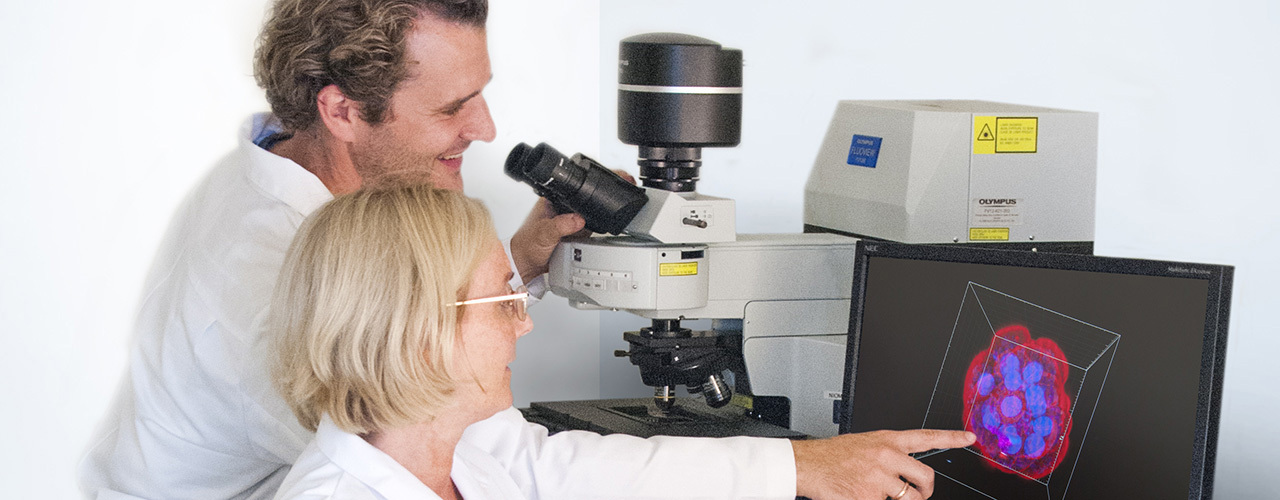
The confocal microscope works principally by using laser light to excite emission of fluorescence from dyes or molecules in a sample. The CLSM focuses light to a spot and scans it across the sample to build an image, in contrast to a traditional microscope that excite the whole field at once. The confocal microscope has a pinhole that excludes out-of-focus fluorescence. This feature enables the operator to take a set of images at different levels of depth and reconstruct a three- dimensional image of the object of interest. The CLSM at NIOM is equipped with two lasers, a diode laser emitting at 473 nanometres (nm) and a helium-neon laser emitting at 543 nm. The microscope is also equipped with a motorized stage, enabling automatic mosaic imaging defined by the user.
In addition, the microscope can be used as a traditional fluorescence microscope with a mercury lamp as excitation source. Specifications of the available objectives are listed in the table below. CLSM is widely used in many biological science disciplines, such as microbiology and eukaryotic cell biology. Biofilms, a surface-associated bacterial community embedded in an extracellular matrix, may have a complex structure.
The CLSM is ideal for imaging biofilms on material surfaces and enables investigation of the spatial organization of bacteria within a biofilm. In addition, CLSM may aid in discriminating between live and dead bacterial cells in a biofilm by using dyes for cell viability. In eukaryotic biology, the CLSM is used to investigate e.g. localization of cellular organelles, the cytoskeleton and other cellular components.
| Magnification | Numerical aperture | Working distance (mm) | Immersion |
| 10x | 0.3 | 10.00 | Dry |
| 60x | 1.35 | 0.15 | Oil |
| 60x | 1.0 | 2.00 | Water |
